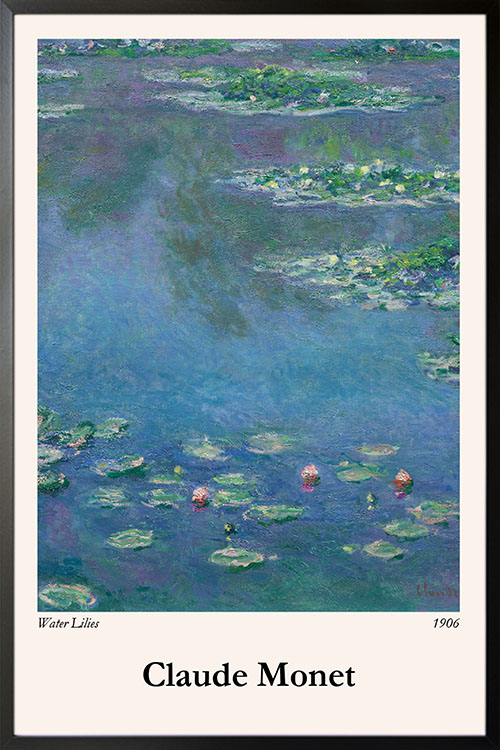
This art features the flower garden at the home of the French Impressionist, Claude Monet. Located in Giverny, his garden was the main focus of his artworks during the last thirty years of his life.

This art features the flower garden at the home of the French Impressionist, Claude Monet. Located in Giverny, his garden was the main focus of his artworks during the last thirty years of his life.
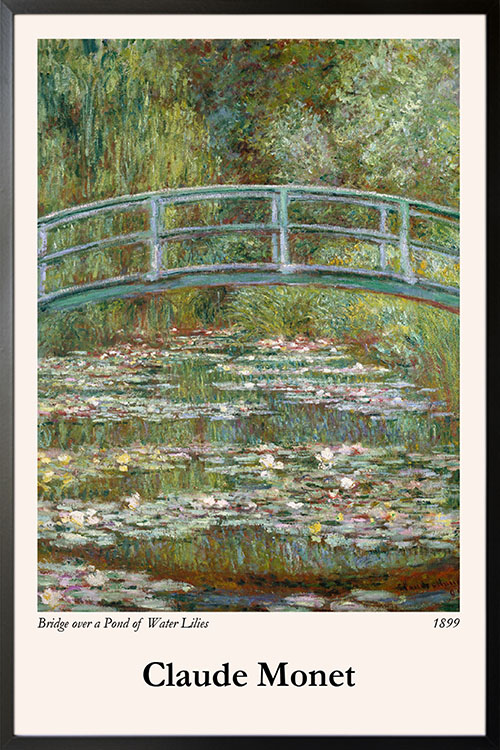
The art shows the piece of land that was purchased by Claude Monet in Giverny. Here, he built his water lily garden along with a Japanese bridge spanning the pond.
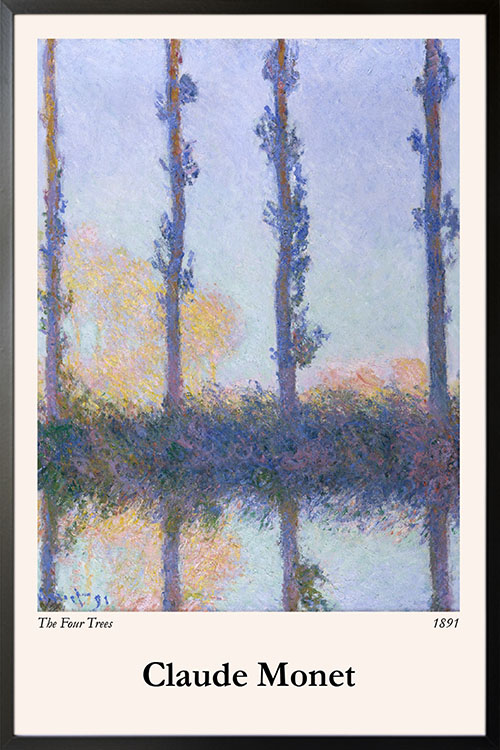
This was one of the series of paintings of Claude Monet that features the row of poplars along the Epte River. Monet oftentimes visited the place to capture the landscape in various time of the day and weather conditions.
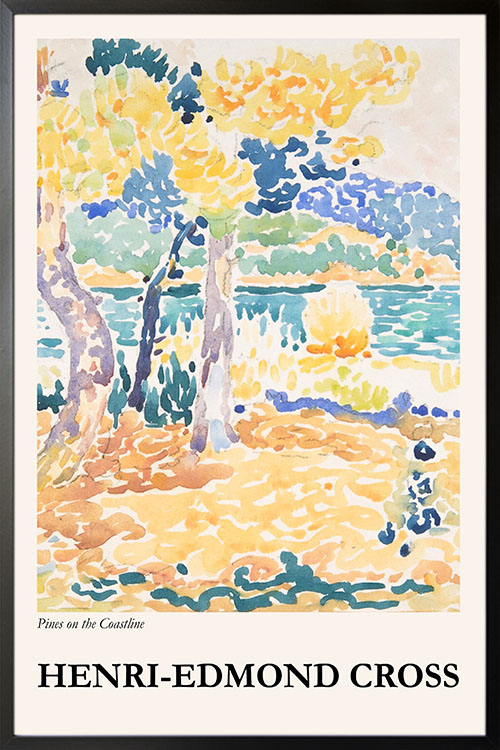
Henri-Edmond Cross was a French painter and printmaker and was one of the most acclaimed masters of Neo-Impressionism. He is also known for being a great influence on many artists, especially Henri Matisse, as well as to the development of Fauvism.
He was born in the commune of Douai in northern France and the only child of Alcide Delacroix and Fanny Woollett. Henri-Edmond Cross studied under Carolus-Duran, Francois Bonvin, and Alphonse Colas. When he moved back to Paris in 1881, he enrolled at the Ecole des Beaus-Arts to work with Emile Dupont-Zipcy.
It was in 1881 that Cross began painting and exhibited his work for the first time at the Salon des Artistes Francais. During his early years as an artist, he met with several artists who have influenced him immensely with his works. Some of the key personalities were Paul Signac and Claude Monet. Henri-Edmond Cross was one of the founders of the Societe des Artistes Indepemdats, which is known for having members of avant-garde artists. Through this group, Cross met other artists such as the pioneer of Neo-Impressionism Georges Seurat.
A decade later, Cross created paintings using the Neo-Impressionist technique that he is best known today. One of his famous works, Madame Hector France, portrays his lover Irma Clare which he married in 1893. Together with Paul Signac, the two hosted other artists such as Henri Matisse and Andre Derain. The two artists also developed a technique that used broader brushstrokes to create a looser version of Pointillism. This technique, later on, became known as the second generation Neo-Impressionism.
During his older years, Cross began experimenting with styles with watercolors painted in front of nature. With his newly discovered style, he boasted to his colleagues that he somehow felt freedom and enjoyment. In 1905, he had his first solo exhibition at Galerie Druet in Paris in which 30 paintings and 30 watercolors were exhibited. Impressively, Cross was gaining popularity and became productive even before his demise due to cancer.
Even though Cross lived and became popular in the late 19th century, he had a great influence on younger painters in the following century. His abstract and expressive use of pure color had a significant impact on the group of artists who later on became known as Fauves. The exhibits, like the one held at the Musee des Impressionnismes, Giverny in 2018, were also significant in the development of 20th-century modernism. Some of the popular works that can be seen framed and displayed in many places these days have titles like, Women Tying the Vine, Madame Hector France, Evening Air, Landscape, The Flight of the Nymphs, Pines on the Coastline, and Pines Along the Shore.
It is common to see paintings displayed in anyone’s home. These artworks are perfect if you want to have a personalized room atmosphere. There are tons of paintings to choose from and many of them will add pops of colors. What makes them more interesting is that they can set the mood and create a theme that will make any living space look amazing. Even modern homes deserve a touch of classic. This can be achieved with the display of classic art like the works of Henri-Edmond Cross. A large-scale framed art can instantly be the focal point of any room. Be unique and make your wall look lovely.

Impressionism was a movement that started in the late 1800s. It was mainly focused on painters of Paris and rebelled against classical subject matter and embraced modernity. The artworks usually feature how light could define a moment in time, with color providing definition instead of the usual black lines. As such, painters of the movement practiced painting outside. This style has long been embraced as one of the most popular and influential art styles in Western history.
The movement was formed in the 1860s when a group of painters including Claude Monet, Alfred Sisley, and Pierre-Auguste Renoir pursued painting outside together. These artists discovered that they shared an interest in painting landscape and contemporary life rather than historical or mythological scenes. They often used countryside scenes as their subject in their artworks.
One of the key personalities of Impressionism was Edouard Manet. He is known for his early influence on and close friendships with the members of the movement. The movement adopted many of the techniques of Manet especially his embrace of modernity as subject matter and the spontaneity of his brushstrokes, together with the use of color and lighting.
The movement was formally announced in 1874 in a show that was hosted by the Paris photography studio of Felix Nadar. The name Impressionist was based on one of the paintings of Claude Monet, Impression, Sunrise.
Claude Monet was the leader of the Impressionist movement. His works were known for their brief brush strokes and fragmented color application. These made their way into the works of others. Monet was very much interested in the passage of time in his portrayal of light. These are seen in his series of paintings capturing Rouen Cathedral at different times of the day and year. His knowledge and skills in Impressionism were further enhanced with his series of paintings of the waterlily pond.
Renoir was regarded as one of the leaders of the Impressionist movement. He likewise shared the interests of Claude Monet but mostly preferred to capture artificial light in places like dance halls and directed his studies of the effects of light on figures, especially the female form. Renoir also preferred “everyday life” as his subject matter.
Impressionism is one of the most important movements in the history of modern painting. Artists of the movement tried to put on canvas the impression of how a landscape, thing, or person appeared to them at a certain moment in time. This meant that artists used lighter and looser brushwork than traditional painters. These styles pushed the emergence of modern art as well as the philosophy of the avant-garde.

This was one of the series of paintings of Claude Monet that features the row of poplars along the Epte River. Monet oftentimes visited the place to capture the landscape in various time of the day and weather conditions.

The art shows the piece of land that was purchased by Claude Monet in Giverny. Here, he built his water lily garden along with a Japanese bridge spanning the pond.

This art features the flower garden at the home of the French Impressionist, Claude Monet. Located in Giverny, his garden was the main focus of his artworks during the last thirty years of his life.
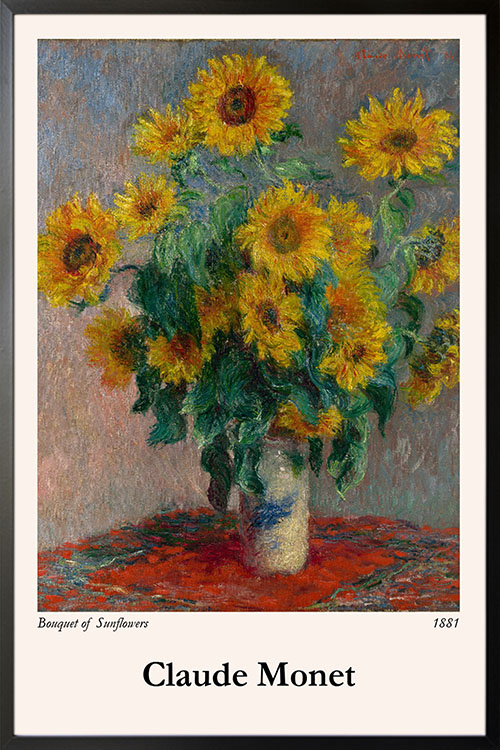
This art was painted by Claude Monet. It represents an alternative to expensive flowers but with the same effects.
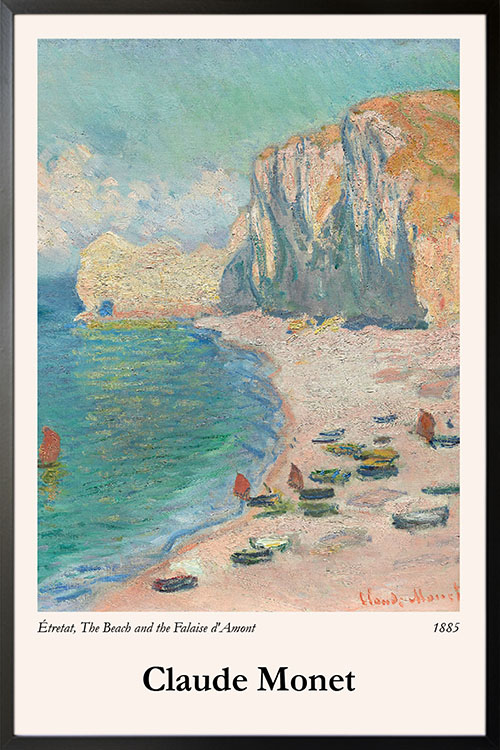
An iconic painting by Claude Monet that shows a beach and the sea. Seen in the background is a large cliff against a beige background. Cool and epic art that will give your home a classic and elegant appeal.